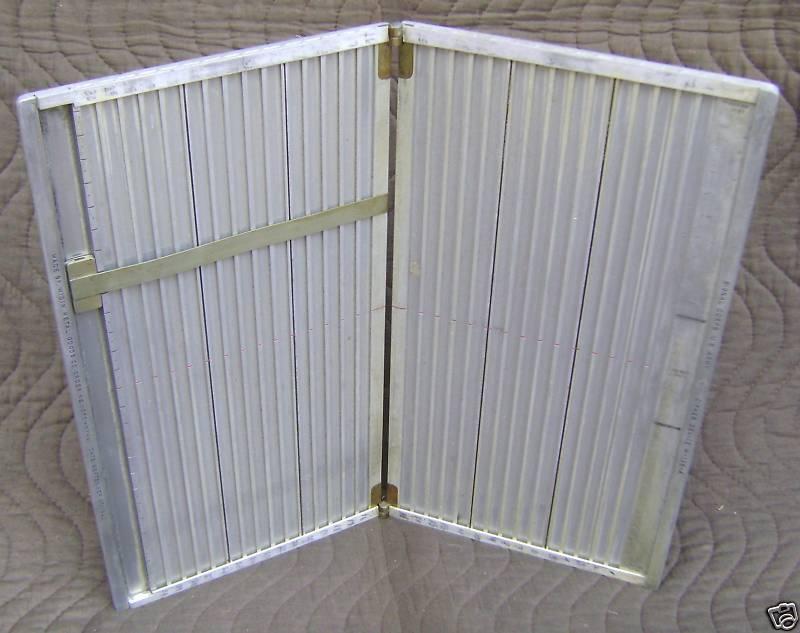|
. |
| SVenus ( M 138 - A )ectel |
| Ansicht |
VENUS was a strip system.The strip board was made of aluminum and had channels running horizontally. It is estimated as being 15 inches from top to bottom, maybe 12 inches wide or vice versa. Because it was hinged, it could be folded in half for convenient storage.
The strips fitted on a wooden board and were moved back and forth with a pencil eraser. A 'slide bar' similar to one on a slide rule was on one side of the board and a non-movable bar ran down one the other side of the board. Plain text would be lined up against the non-movable bar, the "code book" would tell the operator which strips would be moved (left or right) and where the movable bar would be placed. The letters viewable through the movable bar would be written down and this would be repeated until the message was complete.
Then, the 'crippie' would count five letters and make a slash mark and continue until the message was divided into codegroups. "Nulls" were used to fill the last group. As you can imagine, it took forever to encrypt/decrypt with that method. Some of the real small remote outfits required something, so VENUS was it.
SPECIFICATIONS
Signal Corps U.S. Army
Made by Widin Metal Goods Co.
Order number 1070-NY-41
Date September 27, 1940
Material: Aluminum
Dimensions: 12.5 in 15.5 in when open
30 Rows
 |
| Colonel Parker Hitt invented the M-138 strip system in 1916. This precursor to M-138A was an aluminum board with twenty-five channels in which sliding strips of mixed alphabets were used. It was basically a flat version of M-94 (CSP-488) in which the alphabets could be changed more easily. During 1935 the first M-138 was deployed. In 1939 the device was changed to include 30 channels with paper strips and became M-138A in the Army, and then CSP-845 in the Navy. By summer of 1940 most of the United States defense units were using this cipher system. During the war at times when aluminum was scarce unsuccessful substitutions of wood or plastic were made, but both eventually warped and the basic aluminum design was successful throughout the war. |